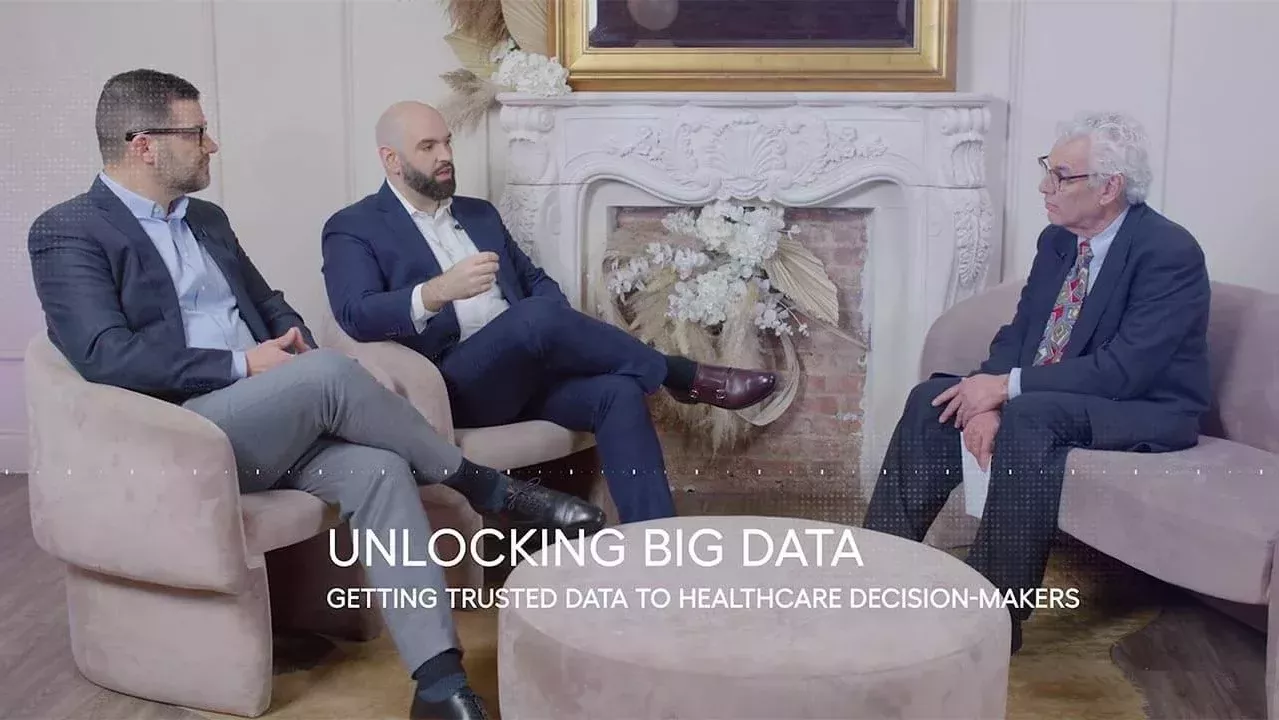The importance of data analytics for healthcare organizations
Data has become an invaluable asset for healthcare organizations striving to provide efficient and effective care. The ability to collect, analyze, and interpret data has opened new possibilities for improving patient outcomes, enhancing operational efficiency, and driving strategic decision making.
In this article, we will delve into the insights shared in Unlocking Big Data, Episode 1 by industry experts Andrew Sorenson, Regional Vice President, Data and Digital Product Strategy and Governance at Centene Corp, and Michael Meucci CEO of Arcadia. In this episode, they discuss key takeaways from HIMSS Market Insights’ research on data analytics platforms.
The first step: Understanding the scope of opportunities
When healthcare leaders collectively agree on the importance of quality data, the first step is to understand the size and scale of the opportunities ahead. Andrew Sorenson emphasizes the need to assess the investments required and the potential outcomes they can yield. This understanding lays the foundation for effectively capturing data and analytics opportunities.
According to Sorenson, “I think one thing that’s really important is to try and figure out the size and scale of opportunities that you have in front of you as a company. Once you realize and have a sense for the investments that you need to make and the outcome of what those investments may yield, it’ll help you understand how much you can invest in order to capture those data and analytics opportunities.”
Michael Meucci adds that organizations should avoid “boiling the ocean” and instead focus on a specific domain to start. By starting small and expanding gradually, healthcare organizations can tackle their data problems more effectively. Defining what constitutes quality data is also crucial, as it helps address the common concern of data accuracy.
Meucci states, “Data in healthcare is imperfect, and as part of the change management process to get individuals using data, being able to define ‘quality data means this’ is an important question because I’ve seen organizations and I’ve lived these experiences where the question of, ‘Is this data right? Is it accurate? Is it high quality?’ becomes the hill that everyone dies on when the majority of the data is fine to use and you’re chasing down the edge case.”
Building the right team and leveraging existing partnerships
To successfully leverage data analytics, healthcare organizations need the right team and leadership in place. Meucci highlights the importance of finding the right leader who can amass a coalition of the willing within the organization. He states, “You want to find the right team. If you don′t have the right leader, I think it′ll be hard to amass a coalition of the willing in order to make some of the changes that you need to make as an organization to really leverage data and analytics.”
Additionally, healthcare organizations must invest in enabling their teams and keeping them updated with the evolving technology landscape. Sorenson emphasizes that organizations relying solely on vendors are often less successful. Instead, building an empowered team that understands both the organization′s technology and the broader technological advancements is critical for leveraging data effectively.
Sorenson explains, “I think large organizations do this equally well. But as you′re thinking about the journey, if you′re a smaller or a mid-sized organization, making sure you understand what goal you′re driving to. A race without a finish line is just pointless.”
Leveling the playing field for smaller to mid-sized healthcare organizations
While larger organizations may already have integrated various tools and applications into their data analytics platforms, smaller to mid-sized healthcare organizations can level the playing field by focusing on specific use cases. Meucci suggests starting with an assessment of existing partnerships and technology solutions. Healthcare organizations can explore whether their electronic health record (EHR) platforms or other technology partnerships offer data analytics capabilities.
Meucci advises, “Every organization at this point has an electronic health record, and every EHR platform is offering some sort of data solution. It may not be what you need for the long term, but it might be great for getting started if you haven’t started.”
Sorenson highlights the importance of prioritization and getting the most value from limited investments. Smaller organizations that excel in this area become laser-focused on delivering value through analytics and finding innovative ways to maximize the impact of their investments.
Sorenson explains, “They become laser-focused on the things that are going to deliver the most value to their organization from an analytics perspective. They also find ways to get a lot from a little in terms of the investments that they’re making.”
Embracing the future: AI and ML in healthcare
C-suite leaders in healthcare organizations are increasingly planning to implement artificial intelligence (AI) and machine learning (ML) solutions within the next year. Sorenson suggests that senior executives have a broader vantage point and are more plugged into the macro trends shaping various industries. They envision the transformative power of analytics, not just for efficiency but also for introducing new business models and enhancing competitiveness.
Sorenson explains, “They’re thinking five or six years in advance. And so, my sense is that that leads them to see the way that analytics isn’t just making organizations more efficient, but it’s completely transforming the nature of competition for a lot of companies and introducing new business models into their own businesses.”
Meucci points out that executives’ motivation to implement AI and ML solutions stems from the need for improved sustainability in healthcare organizations. The challenges posed by the current labor market and financial constraints necessitate leveraging technology to optimize operations and workforce efficiency.
Meucci adds, “AI and ML have the capability of driving a much more efficient workforce where folks are able to work to the top of their license. There’s a retention, there’s a new customer acquisition angle to this that I think a lot of healthcare executives are considering.”
View more of the Unlocking Big Data series presented by HIMSS.




